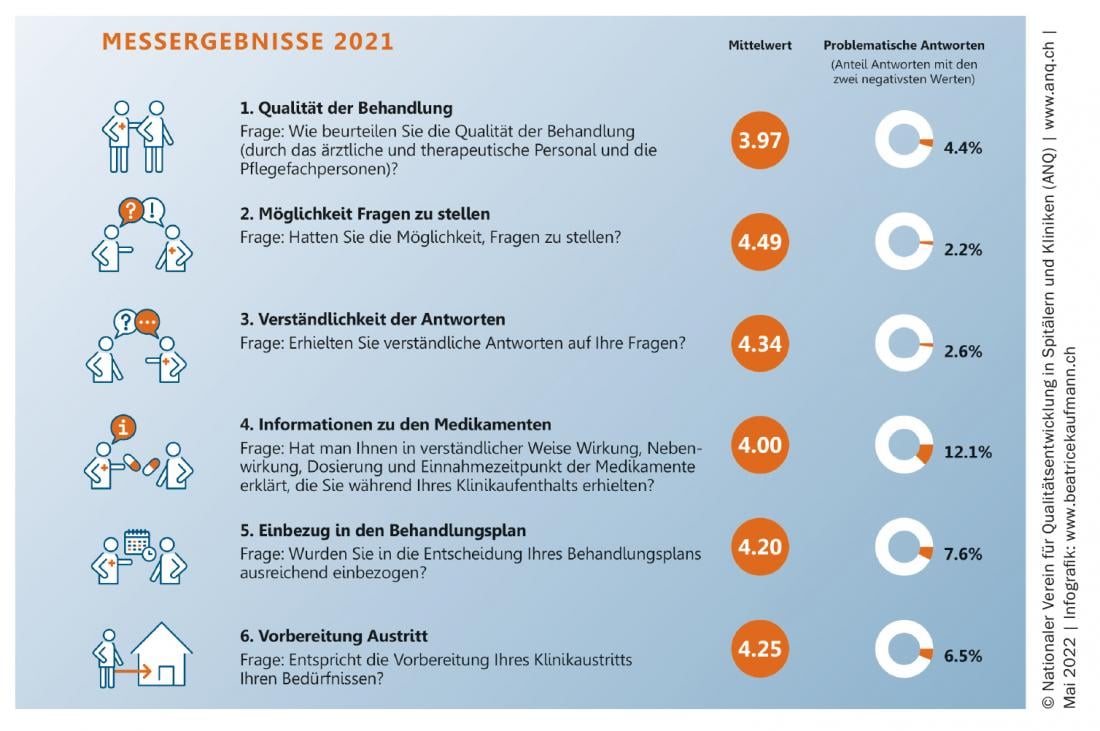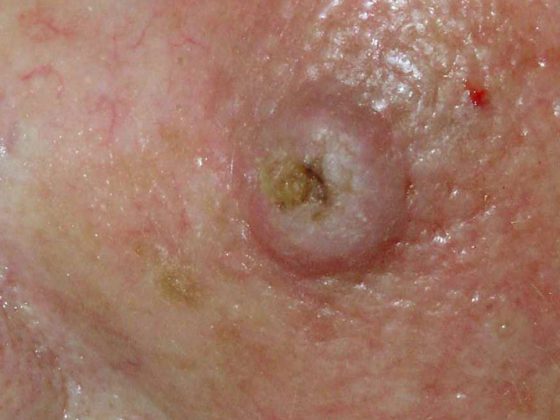Satisfaction among adult inpatient psychiatry patients remains very high. Likewise, Swiss acute and children’s hospitals also achieve very high satisfaction scores. This is evidenced by two national satisfaction surveys conducted at 83 psychiatric hospitals and 19 acute care and 30 children’s hospitals.
Satisfaction among psychiatric inpatients remains at a high level. As part of the fourth national satisfaction survey, 83 psychiatric hospitals surveyed their adult patients from April to June 2021. For this purpose, they submitted the ANQ short questionnaire with six questions about their hospital stay before leaving the hospital, which could also be completed online.
A total of 7265 completed questionnaires were evaluated. The response rate is 56.1%, which is higher than the previous survey in 2019 (49.6%). It was found that the average level of satisfaction with the aspects queried ranged from 4.0 to 4.5 out of a possible five points. The highest satisfaction scores were achieved by the possibility to ask questions (4.5 points) and the comprehensibility of the answers received (4.3 points). Inclusion in the treatment plan and preparation for hospital discharge scored 4.2 and 4.3, respectively. Slightly lower, but still very good, ratings were given to explanations of medications and treatment quality (4.0 points each).
If the lowest satisfaction values are ticked, these are so-called problematic answers. Questions with a comparatively high proportion of problematic answers indicate potential for improvement. This proportion was highest for the question about the comprehensibility of medication information, at 12.1%. There were 7.6% problematic responses to the treatment plan inclusion question and 6.5% problematic responses to the discharge preparation question.
Questions are answered comprehensibly and extensively
Acute care hospitals in Switzerland also have a lot to live up to. The analysis of the feedback from 30 991 adults and 1358 parents of hospitalized children and adolescents proves that satisfaction with the institutions is very high.
More than 63% of adult participants reported that they could ask questions at any time, that they always received understandable answers, and that the purpose of the medications they were to take at home was fully explained to them. For organization of hospital discharge and quality of treatment, slightly more than 32% and 38% of patients, respectively, ticked the best rating. So there is room for improvement for hospitals in both of these areas. An overwhelming majority (just over 90%) described the length of hospital stay as just right. A 3-point response scale was used for length of stay, and a 5-point response scale was used for the other questions. High patient satisfaction has been stable across all six questions since 2016.
Respectful treatment of children and adolescents
Children’s hospitals can also look forward to excellent results. The satisfaction level of parents of hospitalized children is at a very high level. It scores more than 8.8 out of a possible ten points for all five questions. As in 2019, the question on treating the child with respect and dignity received the highest score (9.4). The comprehensibility of the nursing staff and the medical staff were also rated as very good, with a score of 9.0 each. The questions on the quality of care (8.9) and on recommending the hospital (8.8) received only slightly lower ratings.
Quality promotion in hospitals writ large
The National Association for Quality Development in Hospitals and Clinics (ANQ) coordinates and implements quality measurements in acute somatic medicine, rehabilitation and psychiatry. The results allow for transparent and national comparability. Based on these findings, hospitals and clinics can develop targeted measures to improve their quality.
The patient-side assessment of a hospital’s performance quality is an important and recognized quality indicator. Patient satisfaction indirectly maps the quality of care and other services provided. For example, it can influence patients’ health, their subsequent use of services, and their compliance with medical therapeutic advice. Surveying patient satisfaction is therefore in the interest of providers, as well as service providers and the general public.
Source: “Good ratings for stays in psychiatric hospitals,” May 10, 2022, and “Very high satisfaction with acute care and children’s hospitals,” May 17, 2022, ANQ National Association for Quality Development in Hospitals and Clinics.
InFo NEUROLOGY & PSYCHIATRY 2022; 20(3): 42.












